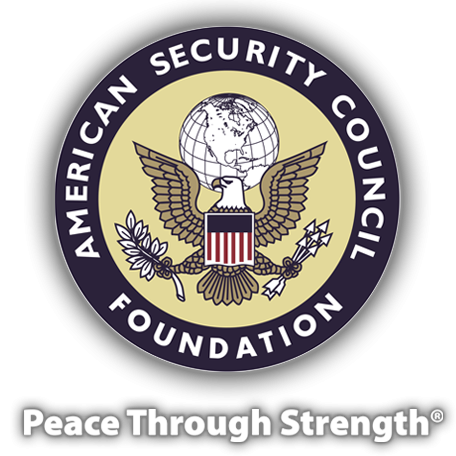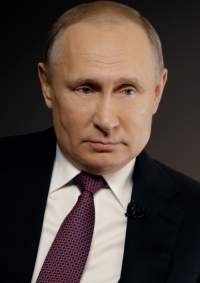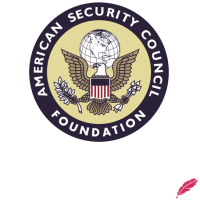NATO Must Firmly Reject Putin’s Demands
By Alan W. Dowd, ASCF Senior Fellow
JANUARY 2022— Give Vladimir Putin his due. He plays a weak hand very well. Regrettably, America and its NATO allies play a strong hand very poorly. With Putin making outrageous demands on NATO, occupying parts of Ukraine, attempting to reverse the settled outcomes of the Cold War, and steadily erasing the sovereignty of Ukraine and other former Soviet republics, it’s time to remind Moscow who holds the ace card.
Countermeasures
It would be wrong to say that Putin is bluffing by massing 100,000 troops and 1,200 tanks along the Russia-Ukraine frontier—while demanding that NATO not expand eastward, cease all military activities in Eastern Europe, pull back its forces to where they were deployed in 1997 (before NATO invited Poland, Hungary and the Czech Republic), and pledge not to reintroduce intermediate-range missiles into Europe. After all, Putin has already proven his willingness to wage war against Ukraine by invading and annexing parts of Ukraine—which he calls “Novorossiya,” a czarist-era term for Ukraine’s Russian-speaking regions. Putin took a gamble in 2014, betting that President Obama—after withdrawing all U.S. armor from Europe, erasing his red lines in Syria, pulling out of Iraq and announcing it was time for America to focus on nation-building at home—would do little in response to a military invasion of Ukraine. That gamble paid off. And now, Putin is betting yet again that with America preoccupied with pandemic recovery and NATO reeling from the debacle in Afghanistan, he can bully NATO out of Eastern Europe, salami-slice his way across Ukraine, and extract from the West a wholesale revision of the post-Cold War security landscape.
Putin’s demands are unacceptable. But if Washington and NATO fail to respond to his liking, Putin is ready and willing to kill more Ukrainians and take more Ukrainian territory. But is he ready and willing to kill NATO personnel and move against NATO territory? And is NATO ready and willing to draw a line?
The answer to that first question is “no”—at least for now. Despite all his bluster, buildups and bullying, Putin respects NATO’s all-for-one security guarantee, which explains why he has invaded non-NATO members Georgia and Ukraine but kept his hands off NATO members Estonia, Latvia and Lithuania.
How NATO answers that second question will determine Putin’s actions and NATO’s future.
Washington should lead the alliance in unveiling a series of countermeasures aimed at defending NATO territory, stabilizing the security situation in Europe, enhancing Ukraine’s capacity to defend itself in the event of a second Russian invasion, and deterring Putin from another gamble. This is not about NATO personnel dying for Ukraine, but it is about NATO defending its interests and territory—both of which will be far more secure if Ukraine remains a sovereign democratic nation, and both of which will be further jeopardized if Putin is permitted to continue his piecemeal conquest of former Soviet lands.
Gameplan
Recent reports that Russian troops are pulling back from their forward positions, while welcome, do not address the crux of the problem: Putin’s almost-animal instinct for sensing weakness and NATO’s penchant for signaling weakness. By hammering out a comprehensive response, NATO can address not only Putin’s latest contrived crisis, but also the root cause of the crisis.
The U.S. and NATO members closest in proximity to Putin’s massing armies should initiate consultations under Article IV of the North Atlantic Treaty. Invoked just six times in NATO’s seven-plus decades, Article IV allows alliance members “whenever, in the opinion of any of them, the territorial integrity, political independence or security of any of the parties is threatened” to address a threat that has not yet mushroomed into a direct attack. With 100,000 troops positioned for attack further into Ukraine, a track record of aggression, and a crescendo of threats and aggressive actions against NATO members and the peace of Europe, Putin has clearly threatened NATO’s security. Article IV consultations will enable NATO to develop a gameplan to defend its members and interests.
Defend NATO Territory
Such a gameplan should initially focus on shoring up the security of NATO members. Toward that end, the just-signed National Defense Authorization Act includes $4 billion for the European Defense Initiative (EDI). Gen. Tod Wolters, NATO’s top military commander, has urged alliance political leaders to approve expansion of NATO’s Enhanced Forward Presence mission by increasing deployments in Bulgaria and Romania. NATO’s political leadership should approve the plan without delay. In addition, Estonia, Latvia and Lithuania have called on NATO and the U.S. to upgrade existing rotational deployments into permanent bases. Poland wants additional U.S. firepower on its territory. Again, the U.S. and willing allies should approve such proposals without delay. The goal is not to start a war but quite the opposite: to prevent what Churchill called “temptations to a trial of strength.” Permanently basing NATO forces on NATO’s most-at-risk territory helped remove such temptations during the Cold War. It will do the same today.
Strengthen Ukraine’s Hand
Even as the alliance bolsters its eastern flank, NATO should strengthen Ukraine’s ability to defend itself from further Russian aggression by announcing plans to deploy cyber-defenses, cyber-redundancies and cyber-defense advisors; anti-aircraft systems, anti-personnel systems and additional anti-tank systems; shoreline defenses; and radar-jamming and counter-jamming systems. Again, the NDAA includes $300 million in fresh resources for the Ukraine Security Assistance Initiative—resources that can be invested in these sorts of weapons. As Rep. Seth Moulton bluntly puts it, the U.S. should give Ukraine “weapons that will have a high cost in terms of Russian casualties.” Moulton recommends that the White House “clearly articulate to the world how the weapons we provide will force Mr. Putin to incur substantial losses of Russian troops.”
Expand the Playing field
NATO should not limit its response to the terrain Putin has chosen. Gen. Kevin Ryan, a former military attaché at the U.S. embassy in Moscow, notes that Russia’s outposts in Georgia and Moldova—bitterly opposed by both nations—are “exposed and vulnerable to military action” by indigenous forces “if supported by the West.” Arming Moldovan and Georgian troops “to create a credible threat to retake these breakaway regions would require Russia to divert military forces from any plan against Ukraine.”
In addition, in response to Putin’s militarization of the Arctic, NATO could stand up an Allied Command-Arctic. The groundwork is in place: Denmark has an Arctic command, Canada an Arctic training center, Norway an Arctic headquarters. The Pentagon has unveiled an Arctic strategy. It’s time for these NATO allies to coordinate their efforts, defend NATO’s Arctic interests, and force Putin to back down or expend resources countering a NATO move.
Enlarge NATO
Given that NATO represents two things Putin opposes—namely, the expansion of liberal democracy and an obstacle to the reconstitution of Moscow’s Cold War sphere of influence—NATO should keep its doors open. Despite Russian objections and Russian interference, the alliance recently added North Macedonia and Montenegro. There’s momentum in Sweden for NATO membership. Bosnia is participating in NATO’s Membership Action Plan, a pathway to full membership. Georgia and Ukraine are eager to be invited into the MAP program. Washington should encourage these developments and make clear that NATO remains open to new members. Although now is not the time for Ukraine and Georgia to join NATO, the U.S. could announce that it will elevate them to the status of “major non-NATO ally”—a designation that enhances security and defense cooperation. Argentina, Bahrain, Egypt, Israel, Jordan, Kuwait, Morocco, Taiwan and Tunisia are among those so designated.
What Churchill said of Stalin and his commissars remains true of Putin and his henchmen: "There is nothing they admire so much as strength, and there is nothing for which they have less respect than for weakness, especially military weakness.”












